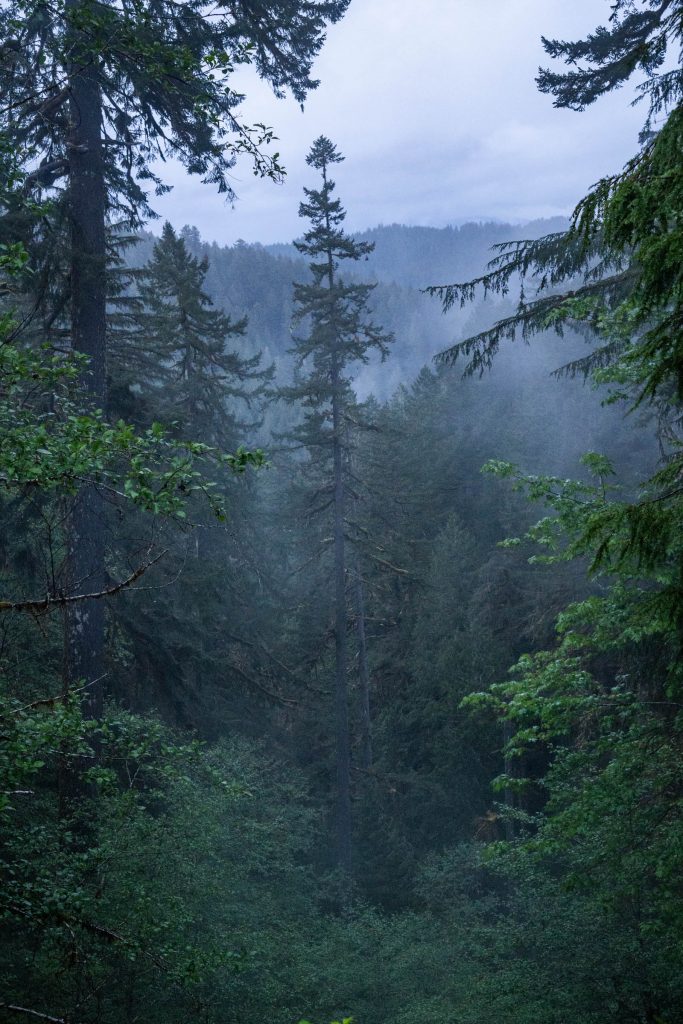The lowland old growth forests and waterfalls of Oregon’s Devil’s Staircase are a natural treasure. Places like this, unchanged since before the dawn of human memory, connect to our core essence as human animals. Once the connection is made, the place is forever with us.
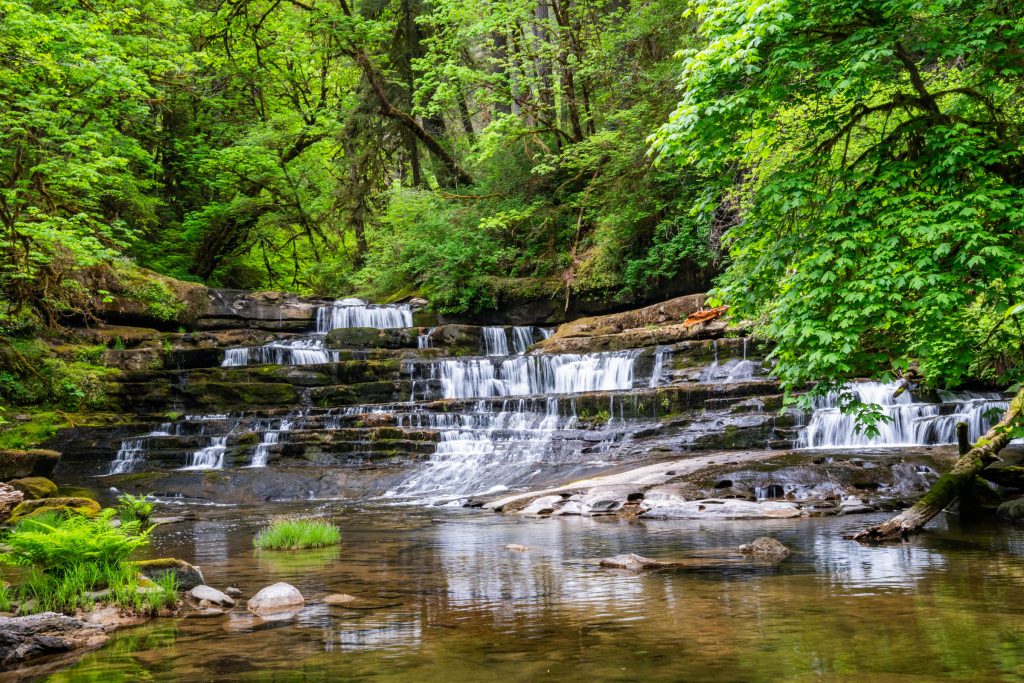
Devil’s Staircase – the name of the wilderness and a noteworthy waterfall within it – is located in the central Oregon Coast Range between the lower Umpqua and Smith rivers. Nearly all of the surrounding forests have been turned into tree farms, leaving only this small patch as it’s always been.
The terrain in this area is steep, and the ground unstable – this made logging access difficult, which gave the area a bit of natural protection for some time. Devil’s Staircase was finally designated as a protected Wilderness in 2019. From my observations, a few patches of old forest remain unprotected, while active logging continues up to the designated boundary.
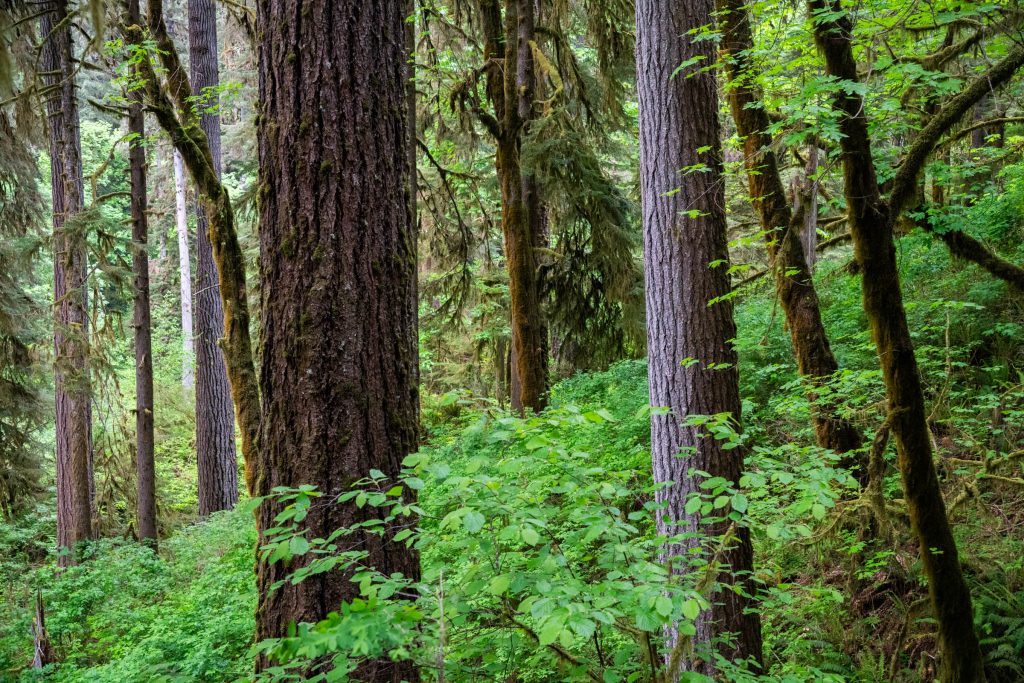
There are no trails in the Devil’s Staircase Wilderness. The route to the eponymous waterfalls is nothing more than a boot-beaten path through thick undergrowth, ever evolving around obstacles. (In case the comparison helps, I found the nature of travel similar to some climbers routes in the North Cascades.) The route starts on a ridge, and grows steadily steeper, thicker and more slippery downhill all the way to the falls.
At the time I visited, someone had affixed ropes in a few key spots. But even with this rudimentary aid, it was a difficult hike. I averaged about 1 mph, as countless branches grabbed every part of me. At times, I had to get on all fours through the mud, or balance some way along the length of a fallen trunk. The route sometimes vanished abruptly, requiring a deliberate search to re-find it.
And who was watching me do all this? Chestnut-backed Chickadees of course. These active little chatterboxes keep tabs on everything trapsing through their territory.
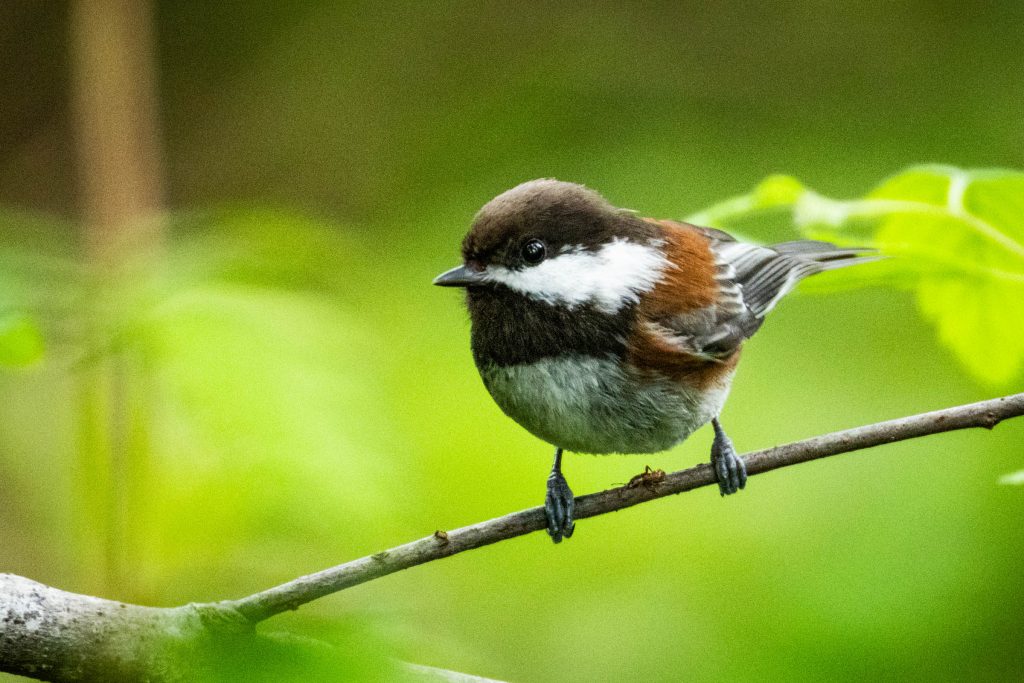
The route bottomed-out at the waterfalls, around 250ft above sea level, and maybe 20 river-miles from the Pacific Ocean. I found clamshells in the streambed, likely dug-up by racoons.
I first explored this small cascade, which is above the main waterfall amphitheater.

Hundreds of Rough-skinned Newts were crawling and floating through small pools the length of the falls. These gentle creatures move slowly and deliberately. They are also toxic – don’t eat them!
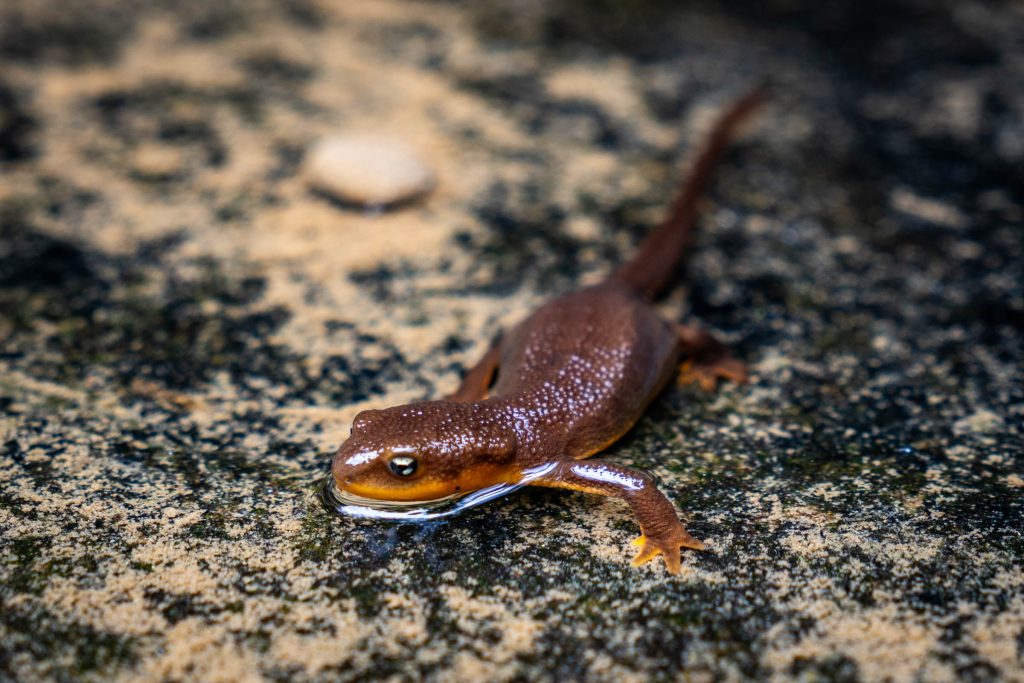
The falls themselves are well named as a staircase. Though, I saw no sign of the devil. Instead, I was more reminded of descriptions of Eden.
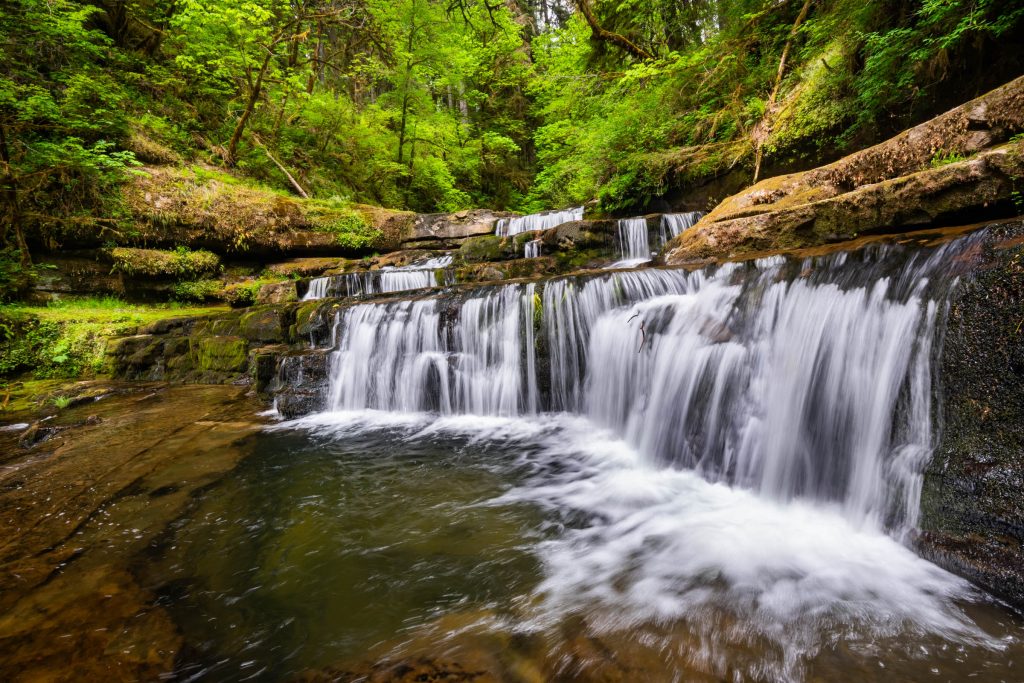
A pair of American Dippers had claimed this prime patch of rapids. This one was doing its trademark dipping motion, looking for underwater insects as the water raced past.
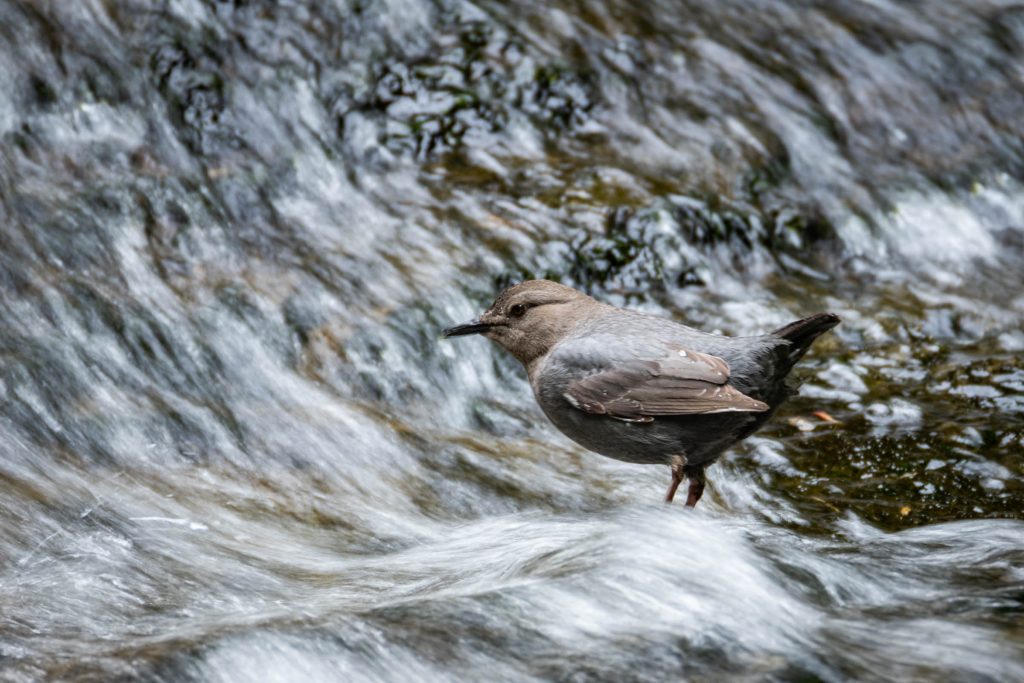
The area felt almost as if it was designed and cultivated by a gardener. This time of year, everything was glowing with a fresh coat of green.
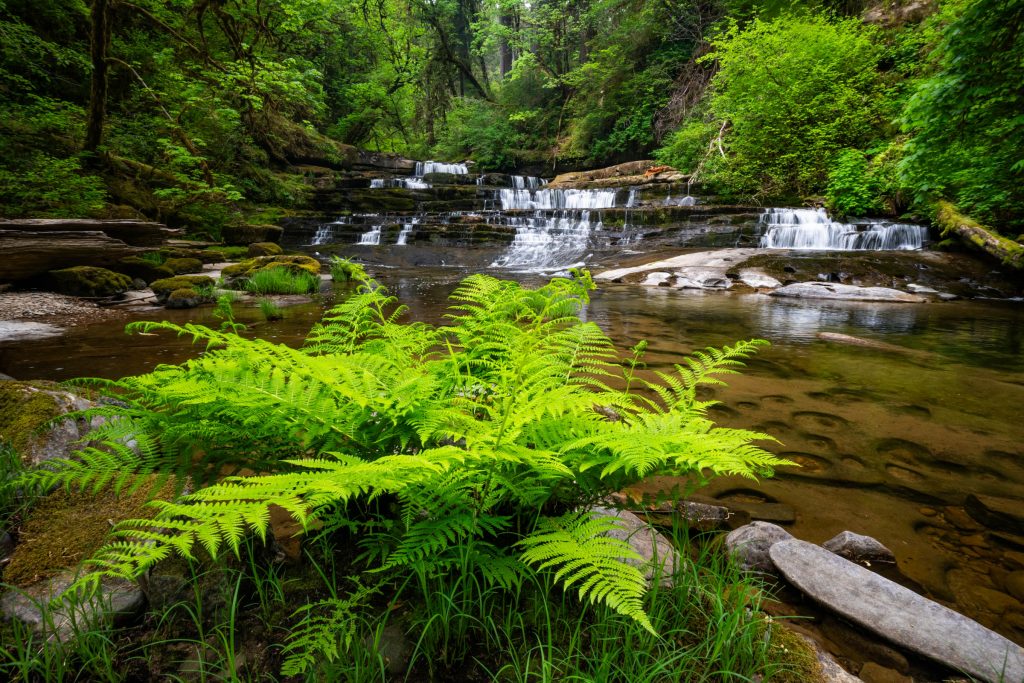
A native Band-tailed Pigeon watched me from a nearby branch. After visiting the rain forests of the Philippines with their many colorful doves and pigeons, I have a new-found respect for our small contribution to this avian lineage.
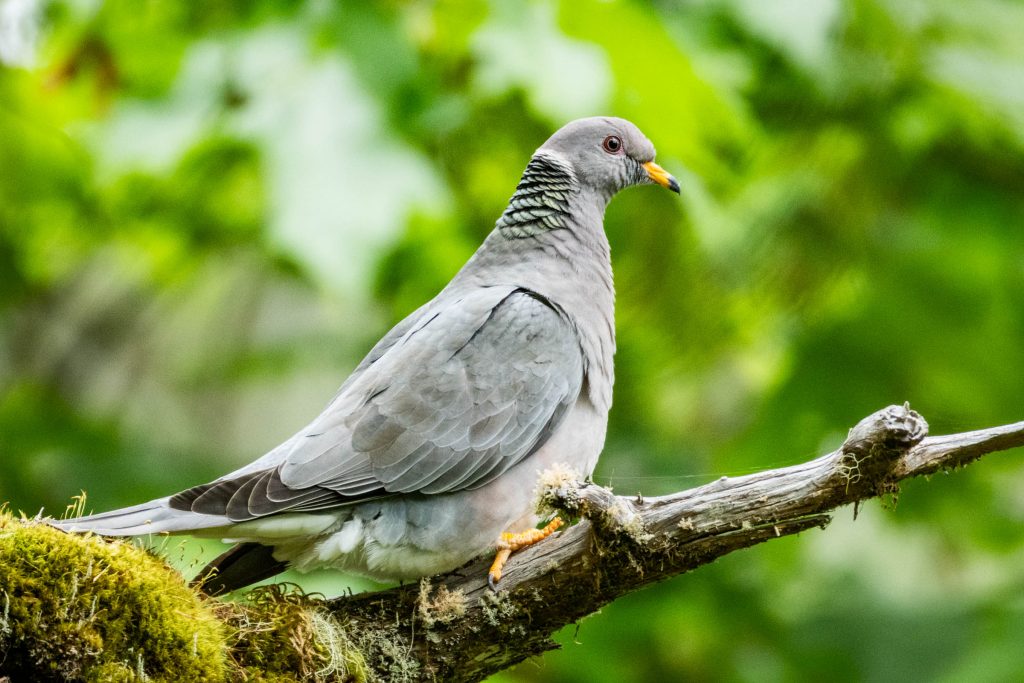
The waterfall is every bit as magnificent as one could imagine, but it is also fragile. Carpets of moss cover some of the rock slabs, and patches of small fragile emerging plants struggle to live in the cracks. I did my best to keep my footprints to bare rock or other lifeless bits, and my overall impact at a minimum.
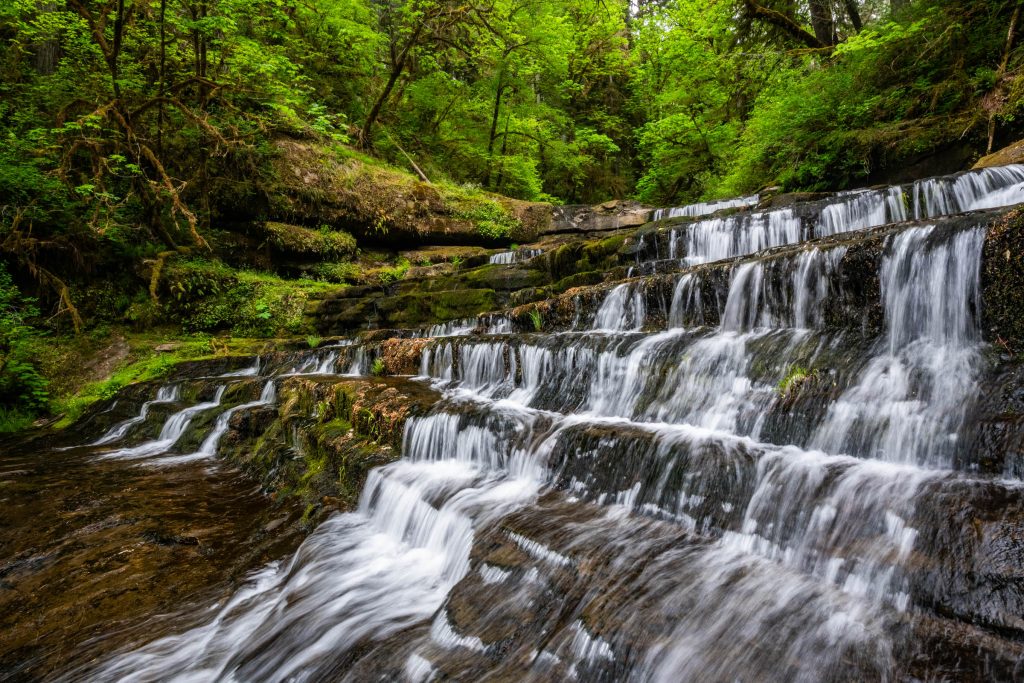
Back on the forest floor, this looks like a mushroom, but is actually a type of Lichen – Lichenomphalia. It’s a giant of the lichen world.
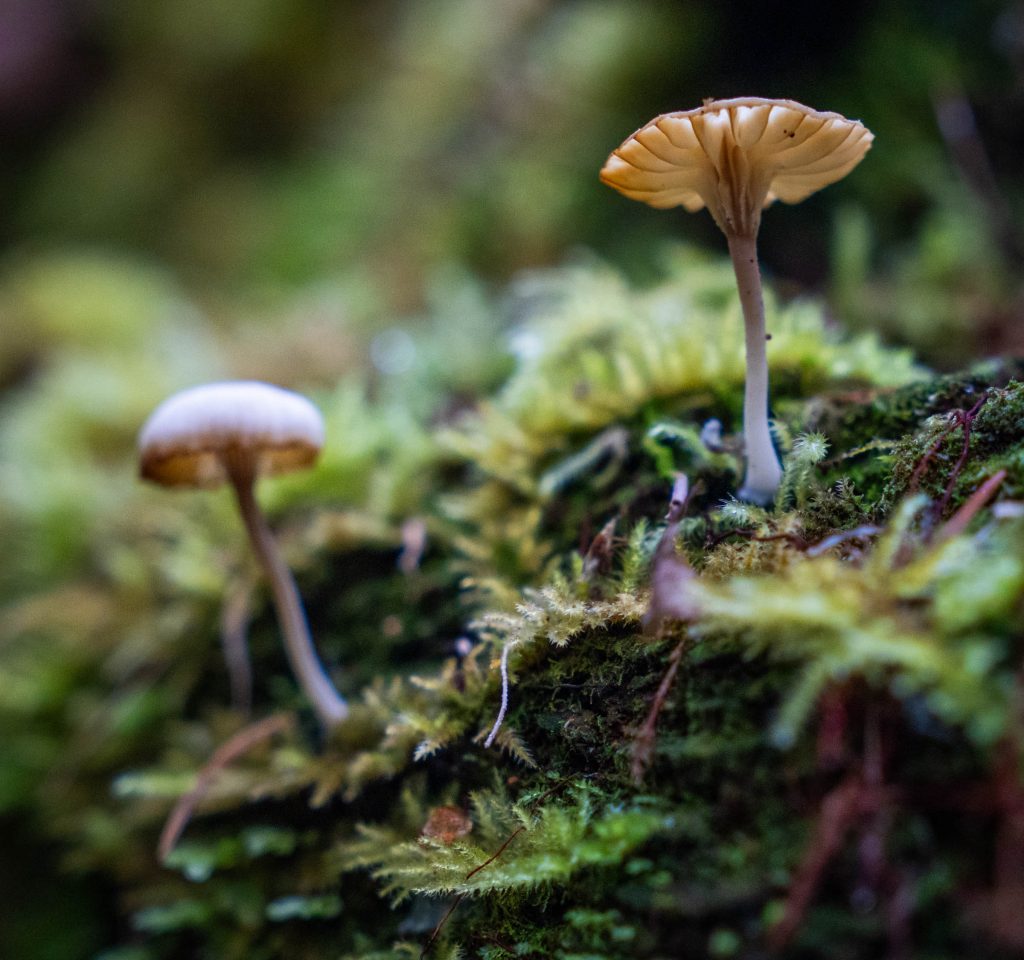
After a long hike back up to the ridge where I started, dusk fell and the fog coalesced. This is a view from one of the roads near Devil’s Staircase Wilderness, just before darkness fell.
I debated about making this blog post, which brings more attention to this special place (and yes, it takes a bit of hubris to think more than a few will actually read this, but it’s “on the internet” and only a search away). Too many other great places have been inadvertently advertised to the masses, then overrun with an unsustainable trample of human traffic. Despite the best of intentions of most visitors, those places are forever changed. On the other hand, people need to know about these places, they need to know what treasures have been entrusted to our keeping. And hopefully, the difficulty of the route will keep the numbers down – this is not an easy hike.
Our natural world needs more advocates. We need to make the case for the value of these places remaining as they are, because there are too many who will never value Wilderness beyond whatever money they can make from exploiting it. Maybe this place will be the inspiration for a future leader, someone who develops a lifelong passion for advocacy. That is my hope. Some day all of us will be gone, but if we are good people, treasures like Devil’s Staircase will be handed down to future generations we’ll never know.
